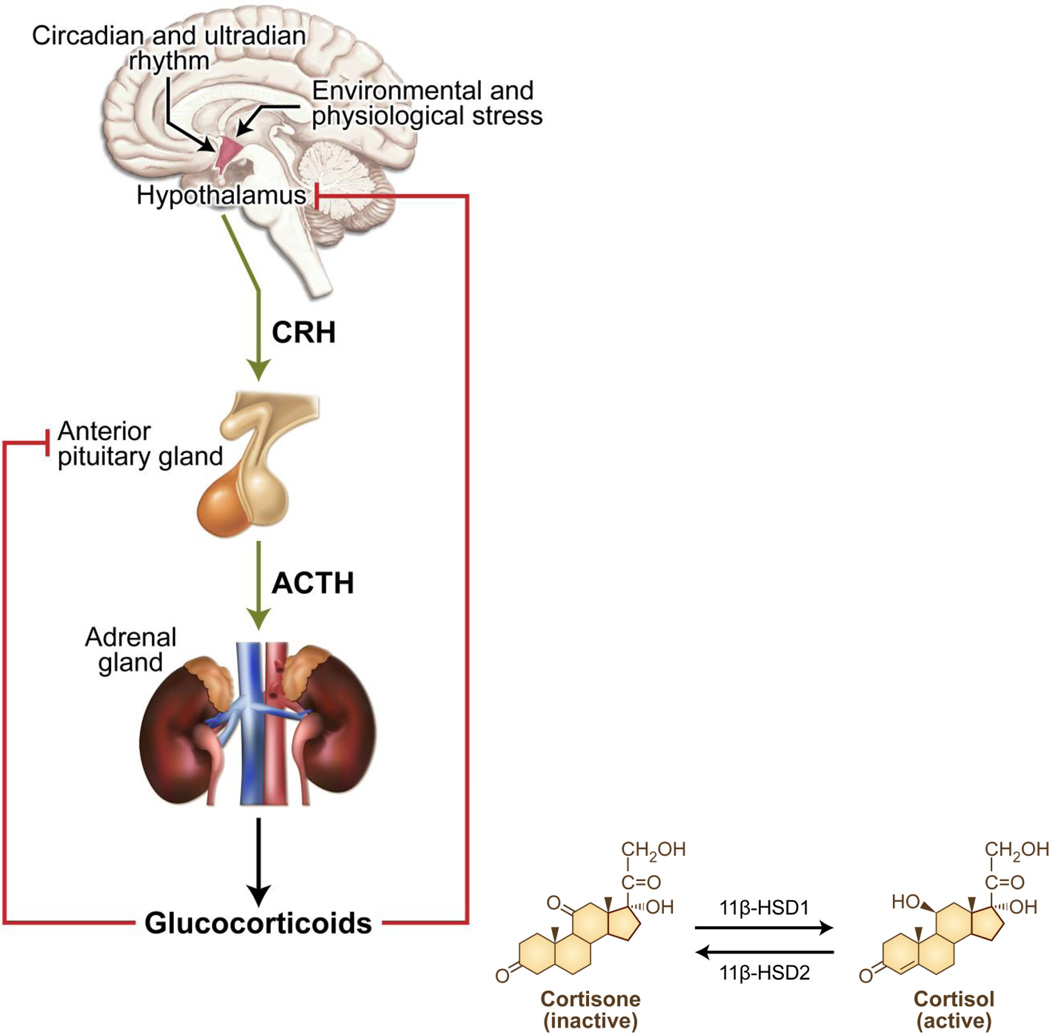Figure 1.
Schematic representation of the regulation of glucocorticoid levels by the hypothalamic pituitary adrenal (HPA) axis. The synthesis and release of glucocorticoids is under the dynamic circadian and ultradian regulation by the periventricular nucleus of the hypothalamus. Corticotropin-releasing hormone (CRH) secreted by the hypothalamus stimulates the release of adrenocorticotropic hormone (ACTH) from the anterior pituitary gland. In turn, ACTH induces the synthesis and secretion of cortisol from the cortex of the adrenal glands into the blood stream. In the blood, majority of the cortisol remains bound to corticosteroid-binding globulins in the blood. The biologically active form of the glucocorticoid is the unbound cortisol that can be converted to the inactive form, cortisone by type 2 11β-hydroxysteroid dehydrogenase. Type 1 11β-hydroxysteroid dehydrogenase converts the cortisone to cortisol. Homeostasis in glucocorticoid levels in maintained by the negative feedback loop suppressing ACTH levels in the anterior pituitary and CRH levels in the hypothalamus.

